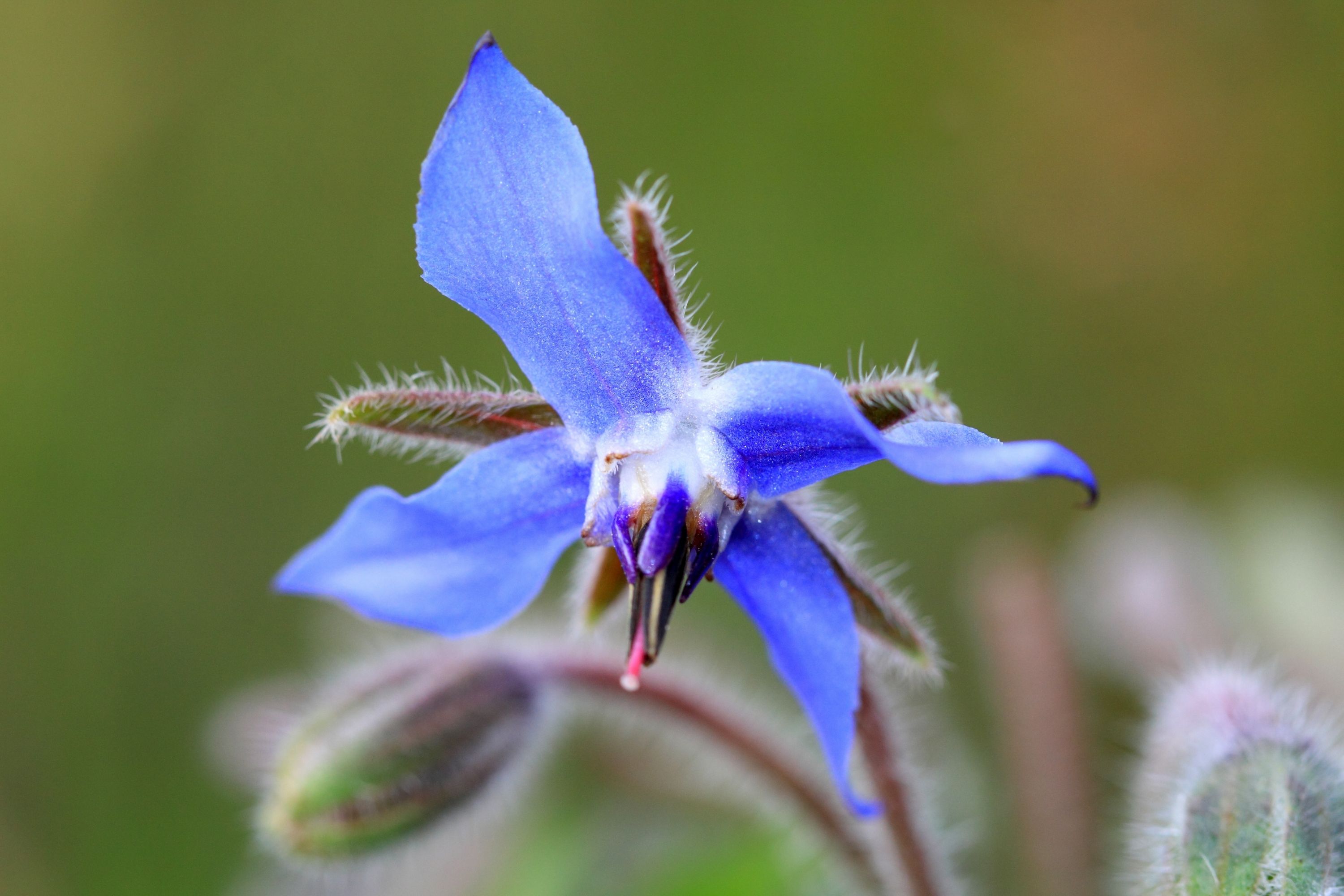Borage
(Borago officinalis)

Description
Borago officinalis, commonly known as borage or starflower, is a popular herb that has been used for centuries for its medicinal and culinary purposes. It belongs to the Boraginaceae family and is native to the Mediterranean region but has been widely cultivated throughout the world. This article will provide a detailed overview of the botanical characteristics, cultivation, medicinal properties, and culinary uses of Borago officinalis. Botanical Characteristics: Borago officinalis is an annual herb that grows up to 60 cm in height. It has green, hairy leaves that are oval in shape and can reach up to 10 cm in length. The flowers of borage are star-shaped, bright blue, and grow in clusters. They have five petals and are approximately 2-3 cm in diameter. The plant also produces small black seeds that are rich in oil and have many health benefits. Cultivation: Borago officinalis is easy to grow and requires well-drained soil in a sunny location. It prefers cool temperatures and can tolerate mild frost. It is typically grown from seed, which should be sown directly into the soil in the spring or fall. The plant can self-seed, and it is not uncommon to find borage growing in unexpected places in the garden. It is also an excellent companion plant for many vegetables and helps to attract beneficial insects such as bees and butterflies. Medicinal Properties: Borago officinalis has been used for centuries for its medicinal properties. It is known to have anti-inflammatory, diuretic, and expectorant properties. It is also rich in essential fatty acids such as gamma-linolenic acid (GLA), which can help to reduce inflammation and promote healthy skin. The oil extracted from the seeds of borage is commonly used as a dietary supplement for its health benefits. The plant is also known to have a calming effect and can be used to alleviate anxiety and stress. It is often used in herbal tea blends to promote relaxation and improve sleep. Additionally, borage has been used to treat respiratory conditions such as bronchitis and asthma due to its expectorant properties. Culinary Uses: Borago officinalis is also widely used in culinary preparations. The leaves and flowers have a mild cucumber flavor and are often used in salads, soups, and sauces. The flowers can be candied or used to decorate cakes and desserts. The plant is also used to flavor gin and other alcoholic beverages. Borage leaves can be used to make a refreshing herbal tea, which is believed to have many health benefits. The tea is often consumed to promote relaxation, reduce stress, and improve digestion. Conclusion: In summary, Borago officinalis is a versatile herb that has been used for centuries for its medicinal and culinary properties. It is easy to grow and can be a valuable addition to any garden. The plant is known for its anti-inflammatory, diuretic, and expectorant properties, and the oil extracted from its seeds is used as a dietary supplement. Additionally, the leaves and flowers of borage are often used in culinary preparations and can add a mild cucumber flavor to salads, soups, and sauces. Overall, borage is a valuable herb that should be considered for its many health benefits and culinary uses.
Taxonomic tree:







